Platonic Inside Sphere
I explored two different forms that I generated with gcode. The first one was an idea I had to have a shape printed solidly and then open strands of filament that went out from the shape to the edge of a sphere. I was hoping it would look like a sphere at first glance, but upon closer inspection, you could see the solid shape inside. I decided to have the inside shapes be the Platonic solids because they are topologically equivalent to a sphere. I first decided to cut each form in half to have a larger flat surface to start the print. I glued the two halfs together after they printed. I tried having the strands of filament be equidistant from each other on each layer, but I quickly realized that the strands would fall down with gravity and the shape of the sphere was lost. When I tried this, I noticed that in some spots, the strands would line up with the ones below and formed ribs (leftmost image below).
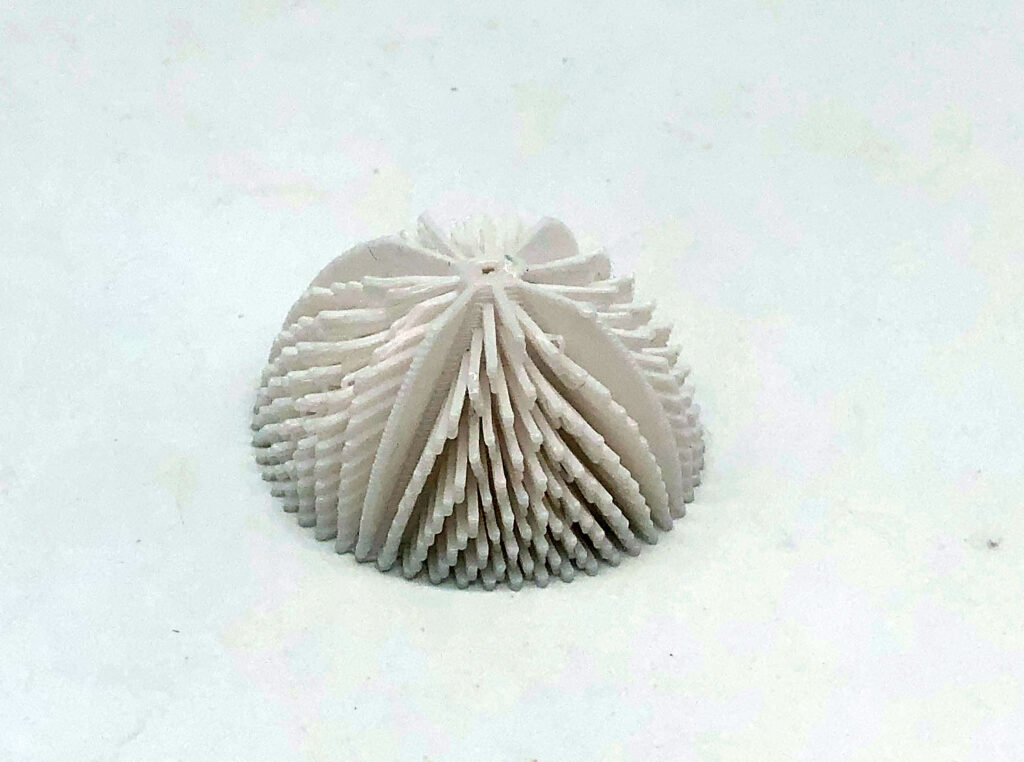
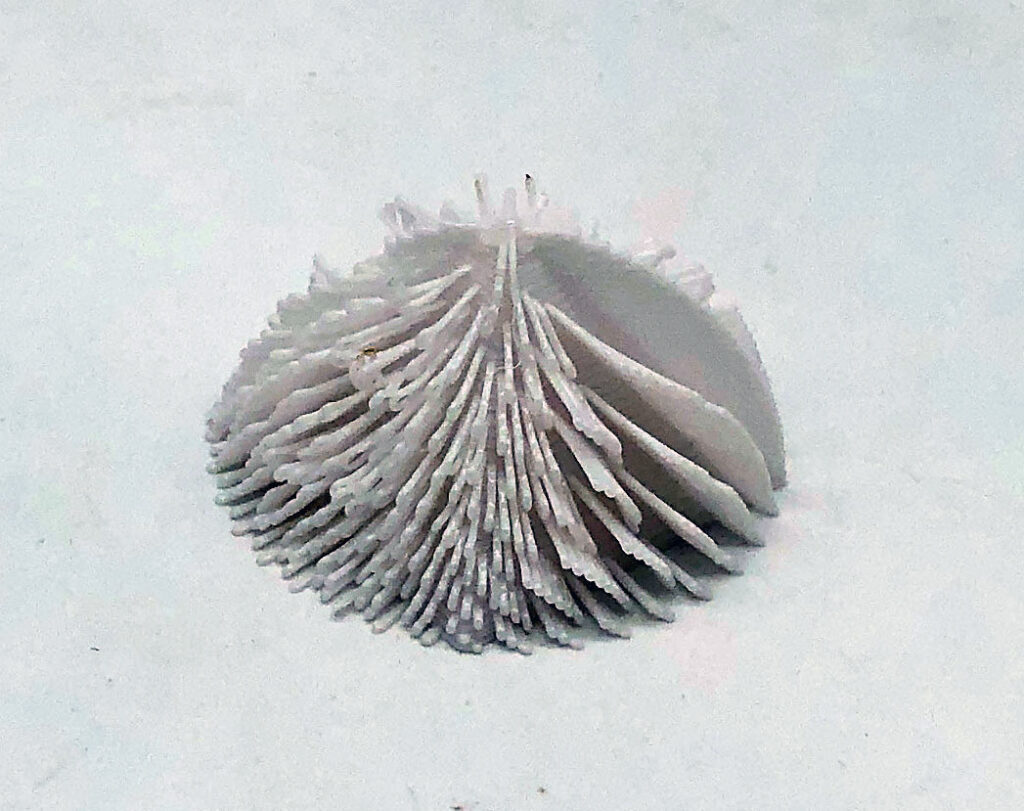
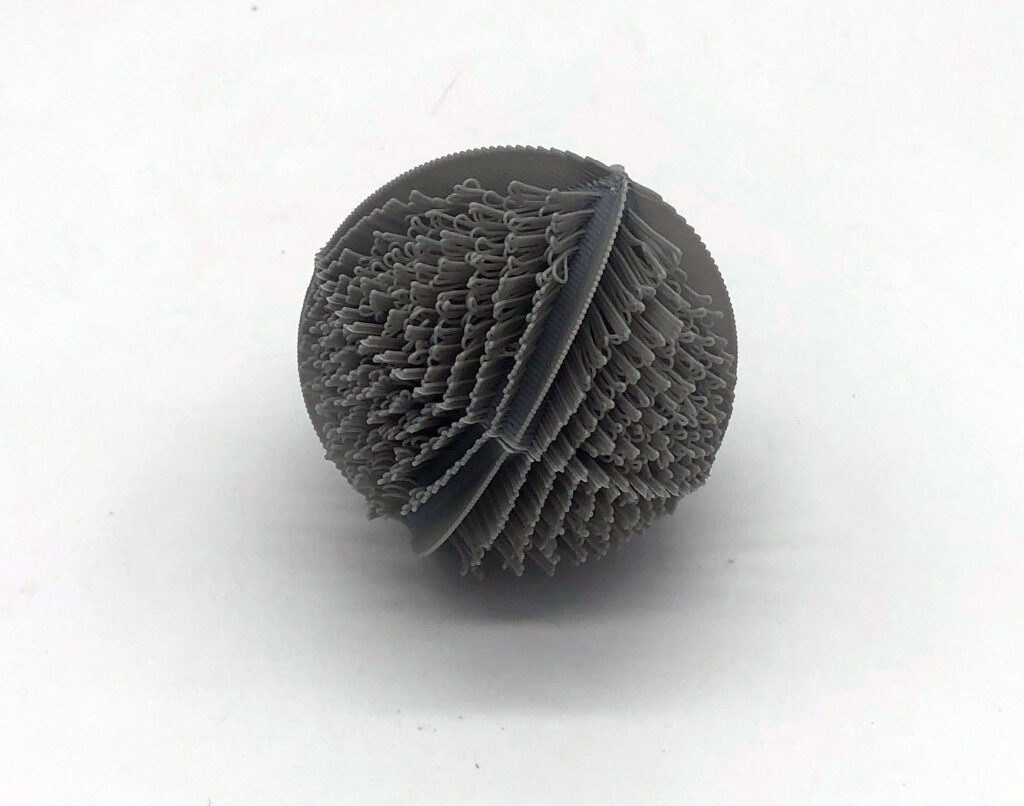
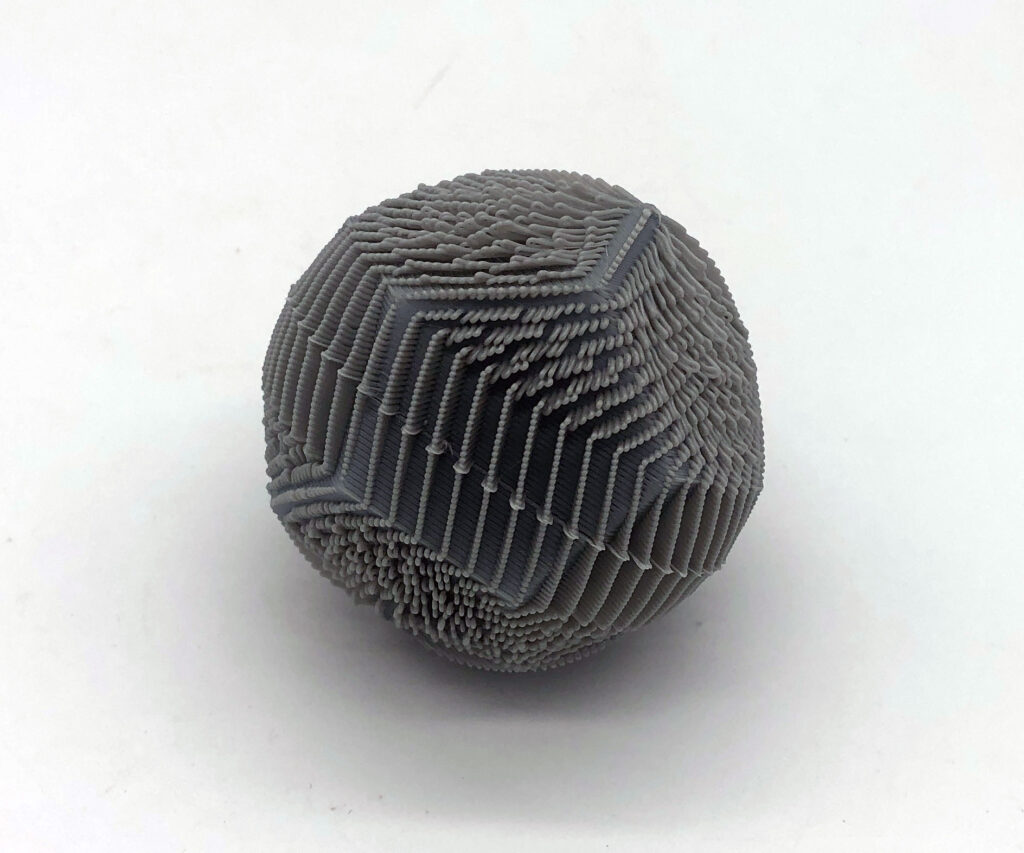
I then changed my code so that every layer that went out to the sphere went out the same number of times. This made it so there would be ribs going up the sides of the forms, which made it easier to see the form on the inside. I tweaked the starting points and how much the ribs twisted to get the best prints. This form could not have been made with traditional printing because I would have had to model every individual rib and make sure they were the right width so the slicer would recognize them but not so wide that it would print one nozzle width thick. My code just takes in the platonic solid and calculates the sphere that surrounds it. I was also able to parametrically change the number and shape of the ribs, and if I wanted to do this with traditional slicers, I would have had to model new forms. It was interesting to have a clear idea of what I wanted my objects to look like, but because I was generating them with code and not modeling them explicitly, I had to do many iterations to figure out the best way to realize my vision. Here is my Grasshopper file: Platonics_inside_sphere.gh
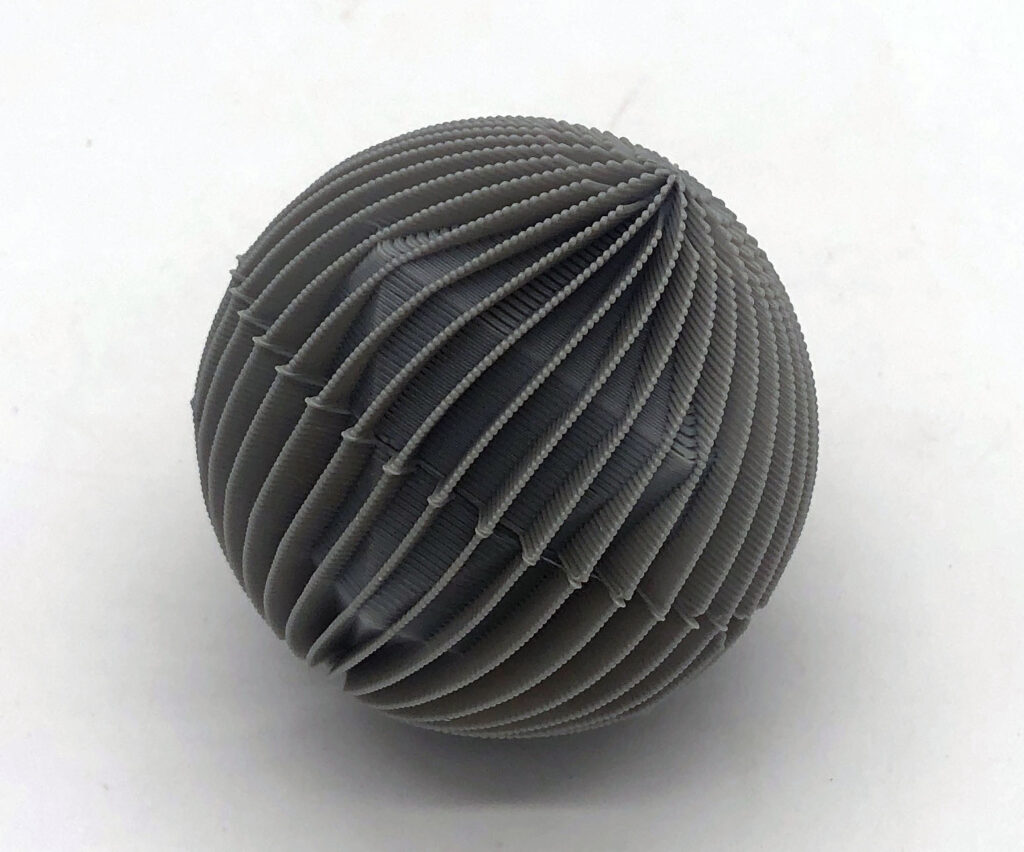
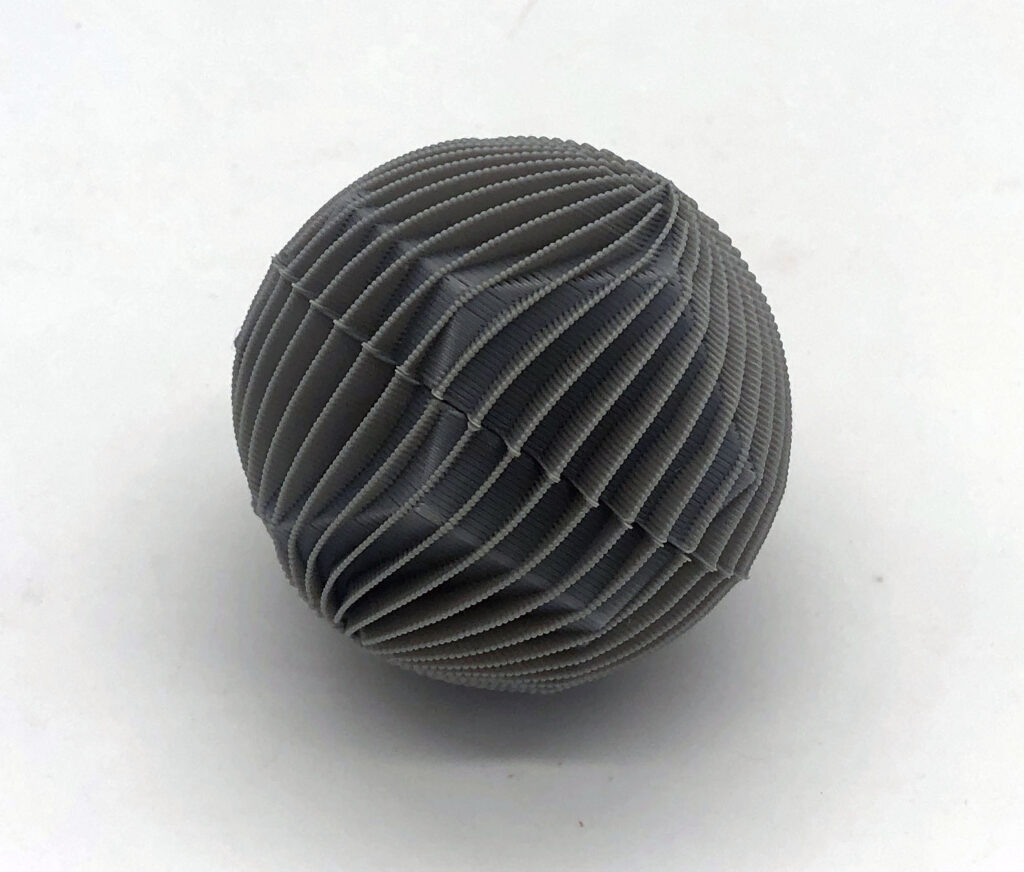


Open Walls
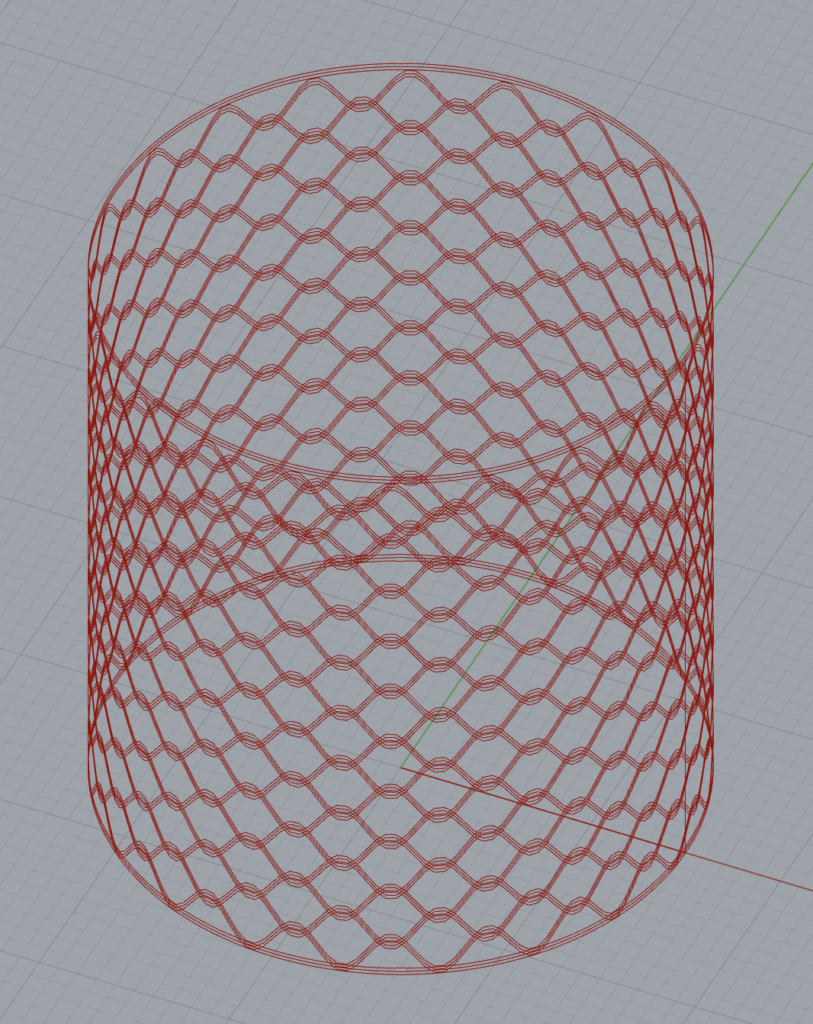
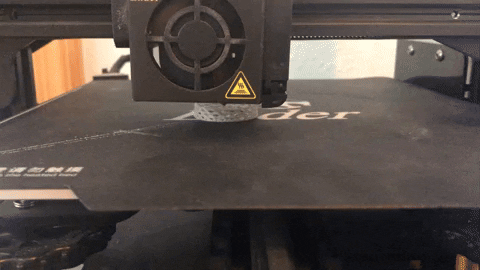
My second form I made utilized the vertical movement available by writing my own code. I wanted to see if I could print a cylinder that had see through walls. I did this by essentially taking our code we made in class that made a sine curve around a form and instead of having the sine curve go in and out, I made it go up and down. I alternated the starting point of the sine wave on alternating layers, so that I did a lot of iterations on this one too. I figured out that I needed a few layers of each sine curve so it was strong enough to hold the next layer. I also needed to overlap successive alternating sine waves quite a bit to get them to stick to each other. I also played with the speed and extrusion to try to get the layer to work. I had many failures before I dialed it in.
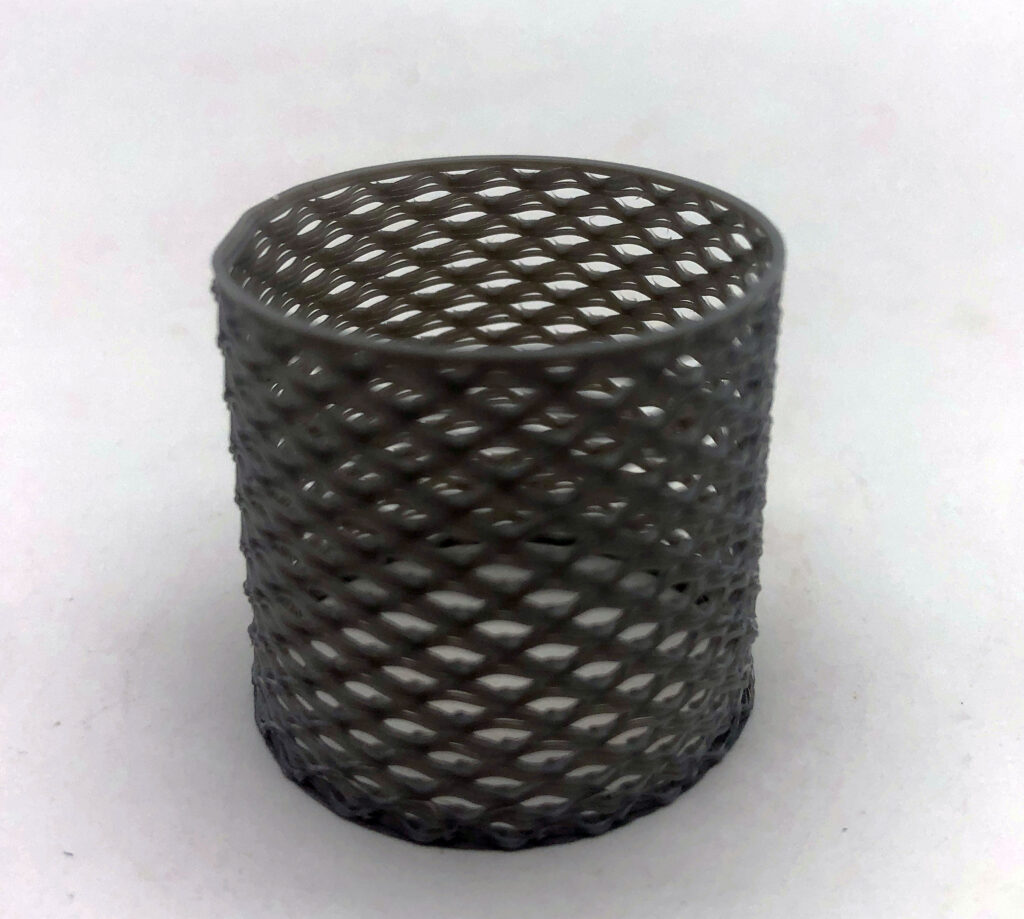
This definitely couldn’t have been printed with a traditional slicer. I could see this being applied to any form to create an open wall structure. I would have to tweak the code to handle a form that is not a cylinder. Here is my Grasshopper file.
Hi Camila, these pieces are really incredible, I love that the extended bits make the shapes appear as spheres, I would love to see these in person some time! Such a fun idea and I love the textures hiding the form beneath. I attempted to do the same thing as your final form with the windowed walls, but wasn’t successful – I didn’t think to tweak the extrusion rates etc, that’s a brilliant idea:) Fantastic work!